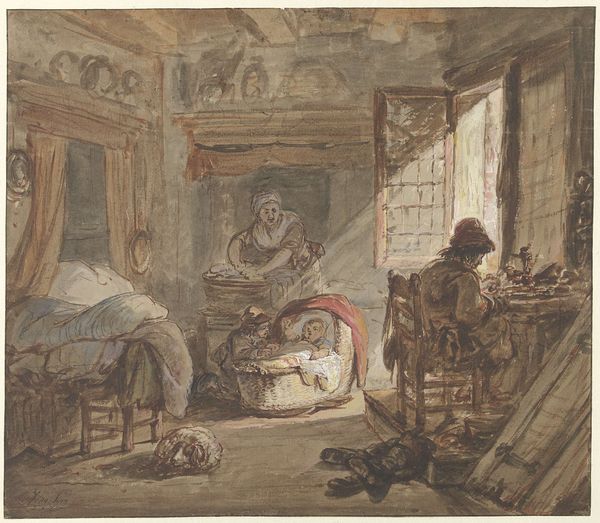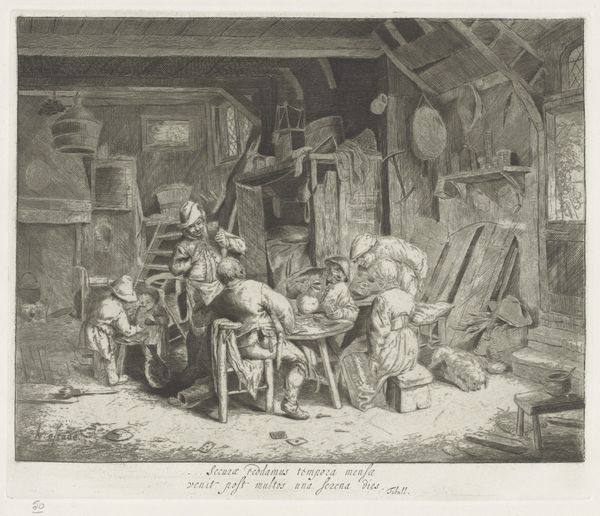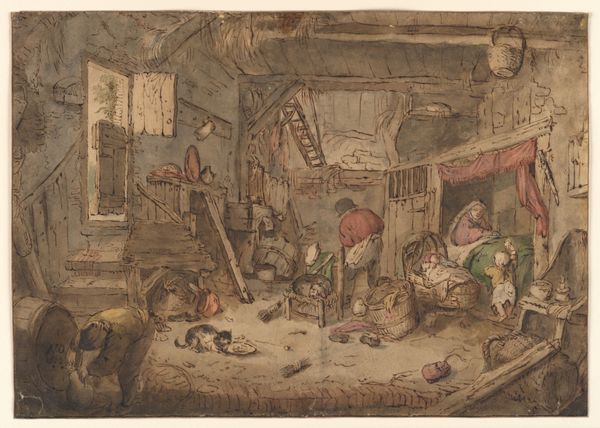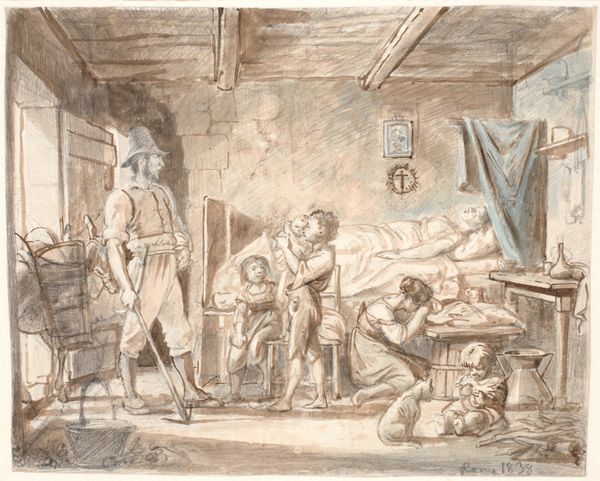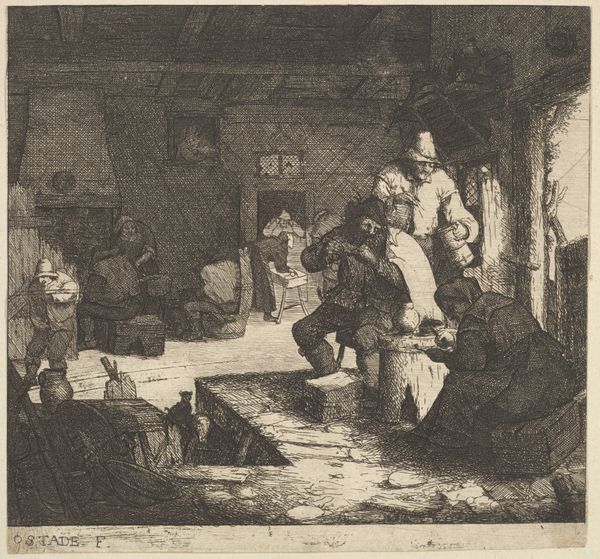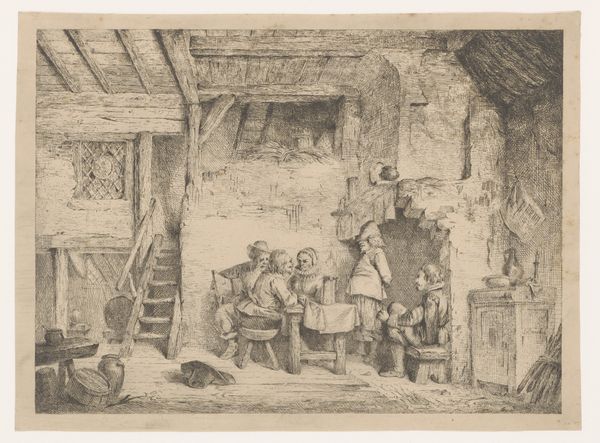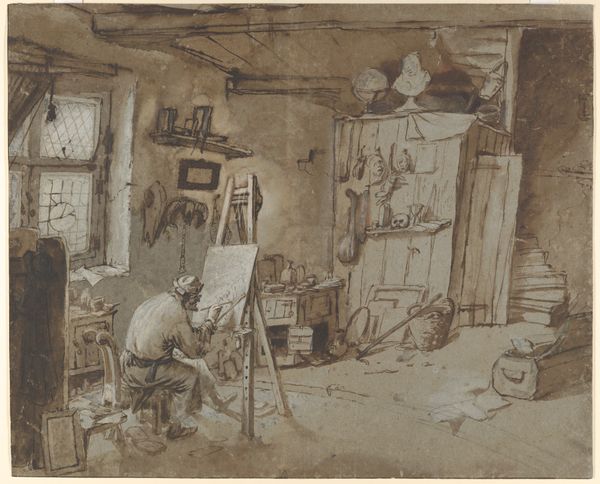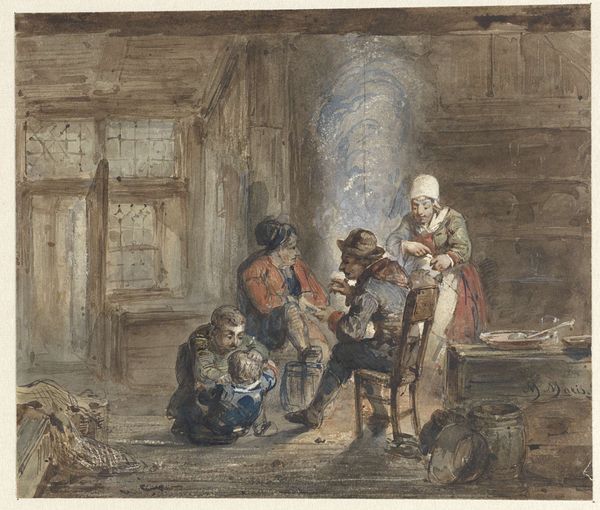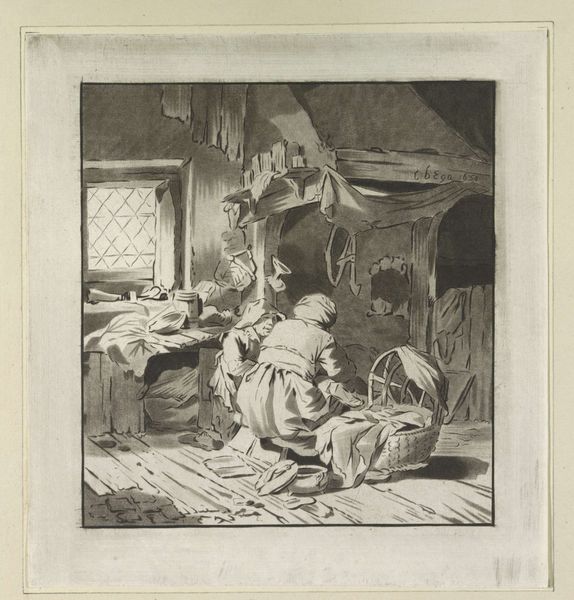
Dimensions: overall: 17.8 x 24.8 cm (7 x 9 3/4 in.)
Copyright: National Gallery of Art: CC0 1.0
Curator: Let's turn our attention to Hubert Robert's "Interior of a Farmhouse with Figures," created around the late 18th century. This work employs ink and watercolor on paper to capture a scene of everyday rural life. Editor: It feels intimate, almost claustrophobic. The subdued palette emphasizes the rough textures of the farmhouse interior. Note how the light is articulated, emanating softly from the doorway and fireplace. Curator: Exactly. The composition leads our eye through a chain of human labor – observe the woman cooking, the figure working at the doorway, the other presumably completing her toilette in the space above the staircase. Robert offers us insight into the organization of labor within the household. It's also an inventory of objects of labour that might have also served as signifiers of status or wealth: those hanging copper pots, that woolen dress hanging from a beam... Editor: Those are all relevant semiotic registers, aren’t they? This isn't just documentation, though. Robert arranges these figures in a way that balances light and shadow, creating a harmony, or perhaps a formal choreography of form. Consider the contrast between the soft roundness of the figures and the sharp lines of the architecture. Curator: I agree. Consider also how the fireplace and open door almost 'bookend' the tableau and contribute to the composition; but how is this image mediated? As a drawing, Robert represents what, for all intents and purposes, is likely to be very dark in actuality and lacking any sense of color. The materials matter too, because what this scene actually captures is a shift: away from agriculture towards artisan manufacture, as well as from regionalism toward Paris as the center of design. Robert is as much a recorder as he is an arbiter of design! Editor: Absolutely, that translation is a fundamental component. The drawing highlights line and shape and directs our understanding as opposed to just reproducing "reality". He simplifies, he edits and highlights certain features over others to guide our interpretations. And he emphasizes a particular feeling--intimacy perhaps, as I suggested--that draws on certain elements. The formal choices are intentional and invite consideration in this representation of late-eighteenth century labor. Curator: It provides an accessible yet captivating view into the means of survival and cultural shifts of 18th-century France, seen from inside the literal working process. Editor: Yes. Focusing on its structure allows us to see how much Robert infused the functional with feeling.
Comments
No comments
Be the first to comment and join the conversation on the ultimate creative platform.
